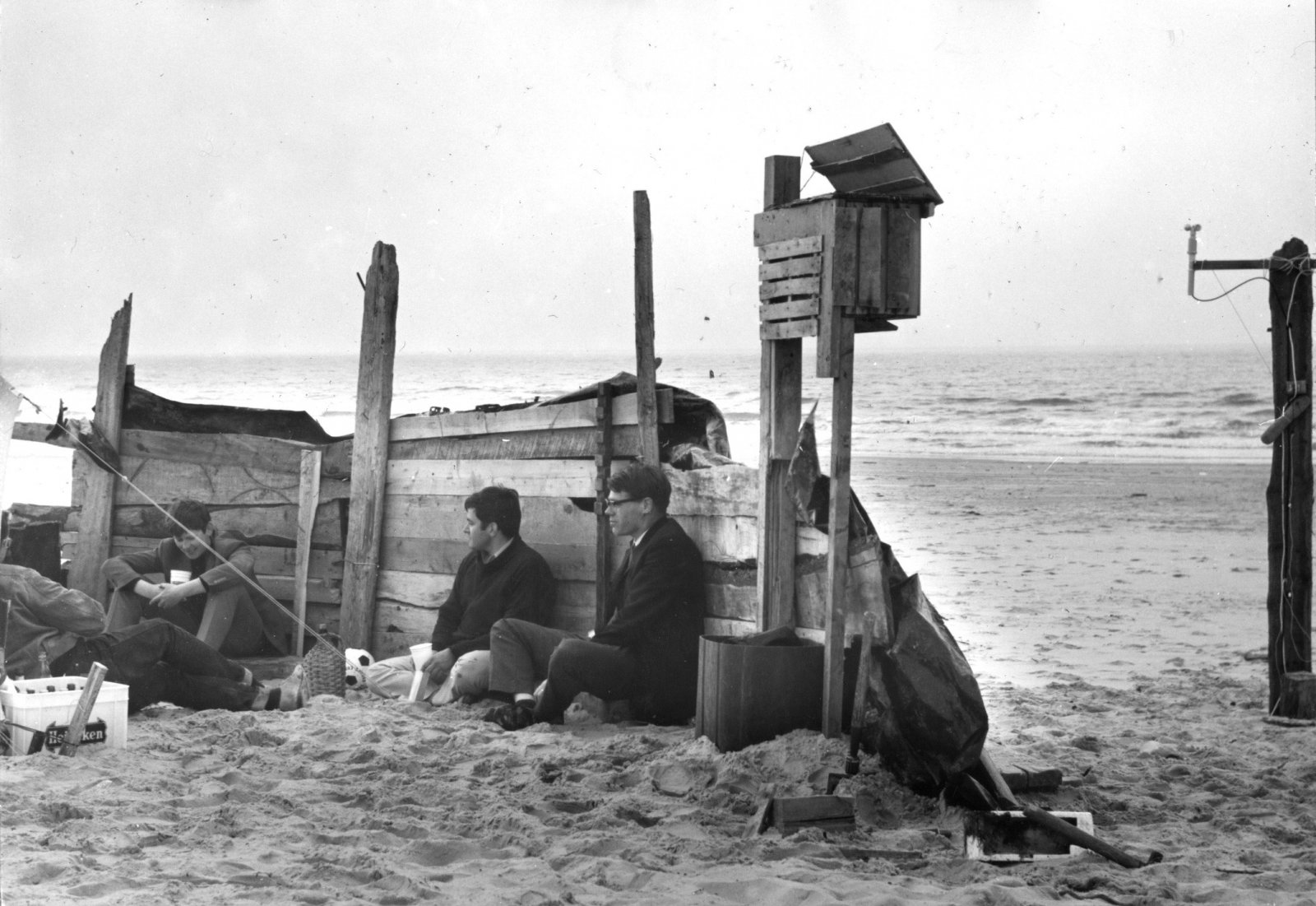IMAU, a short history
Before 1963, it was not possible to study geophysics, meteorology or oceanography at Utrecht University. Three founding fathers (Groen, Schmidt and Bleeker) started courses in meteorology and physical oceanography as a Minor in Geosciences. The three of them were on the payroll for somewhat less than one fte!). We had to wait until 1966 until successively the assistent lecturers Louk Conrads, Wim van Dijk, Jeroen van der Hage were appointed. Together with Piet Jonker (technical assistent) this group constituted the IMOU (Instituut voor Meteorologie en Oceanografie Utrecht).

On September 24th, 1991 the 'Institute for Marine and Atmospheric Research' was formally established
Not unlike the Universe, IMOU started to expand rapidly. Also the exact time of its beginning is not quite certain. Today we believe that it is 1966. An important step in the expansion of the IMOU was its transition from the faculty of Geosciences to the faculty of Physics and Astronomy in 1987. With the appointment of Cor Schuurmans, Hans Oerlemans, Gert-Jan van Heijst and Peter Builtjes, IMOU got a stronger international orientation and started to florish. On September 24th, 1991 the Council of Utrecht University formally established the 'Institute for Marine and Atmospheric Research' as an interfaculty research institute, acknowledging the link between IMOU and the section Coastal research of the faculty of Geographical Sciences. At the same time the acronym IMOU changed to IMAU. In 1994 a proposal to establish a Research School for Atmospheric and Marine Studies was approved by the National Academy of Sciences.
The increasing interest in climate (change) research led to the formation of the Netherlands Centre for Climate Research (with partners KNMI and RIVM). The centre was officially opened in October 1995. The importance of climate research was confirmed by eight years of significant extra funding by the ministry of Education, Culture and Sciences.
In 1997, Paul Crutzen, member of the scientific board of IMAU, received the Nobel prize for chemistry. It was the crown after a period of fast development and expansion of IMAU into a internationally operating institute. The appointment of Jos Lelieveld in 1996 gave new momentum to the atmospheric chemistry group at IMAU.
In 2000 Jos Lelieveld was invited to become director of the Max Planck Institute for Chemistry in Mainz. An offer which he could not refuse, but a loss for IMAU.

The evolution of the climate system on different spatial and temporal scales became the central issue of IMAU
The evolution of the climate system on different spatial and temporal scales became the central and integrating issue of IMAU. Personal high lights were the prestigious Spinoza award for Hans Oerlemans and the election of Will de Ruijter and Henk Dijkstra as Fellows of the Academy of Sciences of South Africa and the Netherlands, respectively.
IMAU also suffered the tragic loss of Peter Duynkerke, a young and prominent scientist, soon after his appointment as a professor in 2002. His successor, Thomas Röckmann, was able to establish a flourishing group with a strong emphasis on experimental atmospheric chemistry.
In the last ten years IMAU survived a number of severe budget cuts associated with the merge of the faculty of physics and astronomy into the beta Faculty. From a small and enthousiastic group of pioneers, IMAU has developed into a stable, renowned institute which is ready to meet the scientific challenges of the 21st century.

